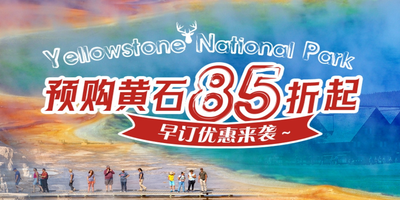共计 7959 个字符,预计需要花费 20 分钟才能阅读完成。
美国洛杉矶时报今天写温哥华的文章,我觉得很好,也爲是温哥华的市民而自豪。温哥华的著名建筑师Bing Thom是这样来解释温哥华精神:
"Vancouverism has got nothing to do with built form," Thom said. "It’s much deeper than that. Vancouverism is a spirit of thinking about the future, and by that I mean thinking: Whatever you do, look twice. Listen twice. Speak once。
A city makes a name for itself; ‘Vancouverism’ alters urban life on a scale not seen elsewhere.
Copyright 2010 The Los Angeles Times
VANCOUVER, CANADA
William Rees spent much of his childhood on his grandfather’s farm in the province of Ontario. What struck him once, after a day of working in the fields, was the sudden realization that everything on the dinner table — the chicken, the milk, the carrots — he had helped produce.
"I was only about 10 years old, and I have no explanation to this day, but I felt as if the ground had fallen beneath me. I was sinking, sinking, deep into the earth," Rees said.
When he moved to Vancouver, he took that sense of "connectedness" with him, and never forgot it. With 75% of the globe’s 10 billion people in 2050 expected to live in urban areas, they had better — if they are to survive — find a similar sense of connection, Rees figured.
He and one of his students at the University of British Columbia in Vancouver in the 1990s pioneered a way of measuring the connection between human population and its consumption of resources. It’s known as the "ecological footprint." Ominously, Rees found that the 2.2 million people who live in the Vancouver region would need an area 57 times larger than their own city to sustain them. Indeed, if everyone on Earth lived as people in Vancouver did, Rees calculated, it would take four planets to keep them alive.
That message resonated, and it changed Rees’ adopted city. To a degree probably unmatched anywhere else in North America, the city of Vancouver has tried to impose notions of sustainability in its decisions on what, where and how to build.
The result has come to be known as "Vancouverism," an urban motif of public transit instead of freeways, a low-carbon energy infrastructure and gleaming high-rise condominium towers in sunlit, walkable neighborhoods laced with urban parks.
The 2010 Winter Olympic Games next month provide a showcase for how Vancouver is trying to evolve. A $1-billion development that houses the athletes’ village generates up to 70% of its power from converted sewage, and the vaulted ceiling of the Richmond speed-skating venue emphasizes that most renewable of resources, wood.
Over the last 20 years, Vancouver has managed to more than double the number of people living downtown while also reducing its carbon emissions per capita to the lowest levels of any big city in North America. The central city has refused to allow a single freeway and recently began to further tighten the noose around automobiles, closing lanes on crowded streets in favor of buses, bikes and sidewalks.
The city has hit up developers to build parks, recreation centers, libraries, day-care centers, and open, public waterfronts to a degree almost unknown anywhere else.
When other cities were erecting warehouse-style retail outlets in the hinterlands, Vancouver built its Costco right downtown — the first urban Costco in the world, with four 40-story residential towers rising from the top. There’s a boutique Home Depot not far away and a Safeway that squats on a second floor, above smaller street-level shops.
The 1908 Woodward’s department store building is being revamped into a mix of high-priced condos, housing for the homeless, a contemporary art institute, grocery store, drugstore and day-care center — all on a single city block, topped by a mini-replica of the Eiffel Tower. "Be bold," said a sign erected at the site, "or move to suburbia."
"We’ve become the North American model that you can’t ignore," said city planning director Brent Toderian. "We’re the only North American downtown to have opened a new elementary school — think about it — and we’re about to open another one. And it’s not because we’re all utopians here. It’s a willingness to have vision, and then back it up with regulation and willpower."
But the new Olympic athletes’ village — a lower-slung eco-village with narrow, European-style streets and green-planted roofs that hardly resembles the city’s famous high-rises — demonstrates the degree to which Vancouver planners have discovered shortcomings in their own magic.
Forests of glass high-rises are a bit monotonous, many residents now complain.
The new downtown is also a victim of its own success: the condos with the good views are so sought-after that they often cost several million dollars. Even the cheaper studios routinely hit $350,000. How can young families afford those kinds of prices?
The city recently suspended new condo conversions in some areas until job centers catch up. The region’s top four employers are various agencies of the government — troubling in a region that long ago shut down most of its resource economy, such as logging.
With downtown housing costs so high, the suburbs have grown rele
ntlessly. For every new downtown resident, four others have moved to the vast, Orange County-like expanse of the Fraser Valley.
And then there’s the traffic: Without freeways, auto commuters are confined to endless queues until they hit the Trans-Canada Highway outside the city. Transit use is high and getting better, but riding in from the far reaches of the Fraser Valley, 35 miles from downtown, can mean one or two long bus trips before reaching the first rail station.
"If you look at the real numbers . . . you’ll discover that Vancouver’s share of growth uptake in the region is actually diminishing as a proportion," said Lance Berelowitz, who edited the city’s Olympics bid package and wrote the book "Dream City: Vancouver and the Global Imagination."
Much of the sprawl gets blamed on the 21 municipal governments outside Vancouver. Metro Vancouver, a council of regional governments, has walled off agricultural lands from development and attempted to funnel suburban growth into a series of half a dozen mini-urban centers up and down the Fraser Valley. But the council rules by public discussion and consensus, often a useless combination compared with the lure of new tax revenues from office parks and strip malls.
Planners say the regional city centers won’t get off the ground unless they bring to the table the same spirit of Vancouverism that inspired downtown’s rejuvenation, including allowing a powerful government to twist arms to enforce a new social vision.
That means forcing developers to spend money on recreation centers and parks, promising them extra stories on the top of their buildings if they agree. Meanwhile, neighbors need to be reassured that the effect of the high densities will be offset by the new day-care centers and green spaces.
It also means using public financing — loan guarantees kept the Olympic village from imploding during the economic downturn — and sometimes mixing millionaires and immigrant welfare recipients in the same building. Public agencies and private developers often wade into the same project, each financing their own parts.
"There’s a kind of social ideal that is pretty fundamental to Vancouverism, and it’s an important difference between Canadian cities generally and American ones –the role that government agencies play in engineering the mixing of people," said Trevor Boddy, curator of the exhibition "Vancouverism," opening Friday in the new Woodward’s atrium.
Not everyone has been enthusiastic about the government strong-arming new density.
Many Vancouver residents see it as another excuse to hand the city over to land developers. The promises of perks in exchange for density don’t always materialize, critics say, such as when neighborhood recreation centers are overcrowded and there aren’t enough buses to serve residents who’ve been lured out of their cars.
"The idea of ecology, sustainability and so on have been used to justify an exaggerated increase in density. But none of the eco-part hasreally been paid attention to," said Alicia Barsallo, whose east Vancouver neighborhood is slated to triple in population.
The near-in suburbs, some already ripe for urban renewal, may prove an easier sell. Surrey got on board with a project that re-imagined a shopping mall in a run-down part of town.
Vancouver architect Bing Thom, a Hong Kong immigrant, sent in a team that punched out the roof and perched a new campus of Simon Fraser University on top. The mall and the school are connected by walls of glass, an intricate structure of vaulted wood and a giant atrium. The whole project was developed by a government-owned insurance corporation, which also built an office tower next door for its new headquarters.
Several other financial institutions have moved in. Students use the mall food court in lieu of a cafeteria. University computer labs look out through glass walls over shoppers sipping coffee. Surrey liked the result so much that it scheduled the first-ever performance of its new symphony orchestra in the atrium. The project won top prize at an international real estate development competition in Cannes, France.
"Vancouverism has got nothing to do with built form," Thom said. "It’s much deeper than that. Vancouverism is a spirit of thinking about the future, and by that I mean thinking: Whatever you do, look twice. Listen twice. Speak once."
相关阅读: 温哥华热门旅游线路





